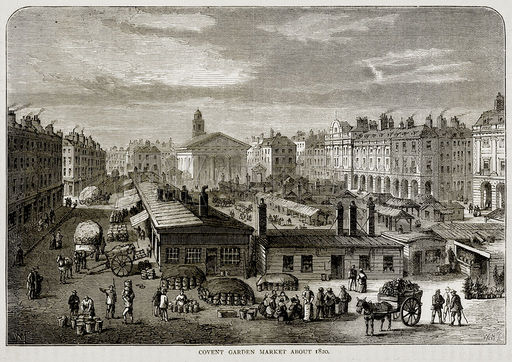 |
| Covent Garden Market, London. 1820. |
 |
| Five Points, New York. 1827 |
Romanticism emerged due to the prominence of the individual, human emotions and feelings. Romantics wanted to emphasize in their works -in literature as well as in painting- the self and the human thoughts. Romantic authors, in relation to the individual, liked to work on the analysis of the soul, the psychological and even the terror of the mind. For example, in literature started to appear characters that were taken to the most hard, unbearable and difficult situations in which he experiences a terrible involvement in a critical plot.
 |
| "Wanderer above the sea of fog" - Caspar David Friedrich |
Literature and art practically lived together in Romanticism. Both cultural movements had the same characteristics and were specially interested in nature. In Romanticism started to appear the word Sublime as a definition to a setting that was beautiful but at the same time scary. Edmand Burke in his essay 'A Philosophical Enquiry into the Origin of our Ideas of the Sublime and Beautiful'
(1757) he claims:
“Whatever is fitted in any sort to excite the ideas of pain, and danger, that is to say, whatever is in any sort terrible, or is conversant about terrible objects, or operates in a manner analogous to terror, is a source of the sublime; that is, it is productive of the strongest emotion which the mind is capable of feeling .... When danger or pain press too nearly, they are incapable of giving any delight, and [yet] with certain modifications, they may be, and they are delightful, as we every day experience.”
 |
| “The Falls of Kaaterskill” - Thomas Cole |
Another kind of setting in Romantic stories are related to the supernatural theme. It is usual to find plots going hand in hand with ghosts, haunted houses, the devil, death as a living being, etc. Good examples of the representation of this last characteristic are the stories of the well known American writer Edgar Allan Poe.
 |
| Edgar Allan Poe |
For further information on the Romantic background, you can watch the next video:
No hay comentarios:
Publicar un comentario